How to Use the Admin Panel Menu
The menu located at the top of the Magento Admin Panel gives you quick access to virtually every administrative component of your site.
Introduction

The Menu positioned at the top of of the Admin Panel is the fastest way to move between administrative resources located in the backend of your site. It is organized by content type, which makes it easier to find what you are searching for based on the task you are hoping to accomplish.
This menu can change based on your individual configuration. More information about specific areas within Magento can be found in the official Magento documentation.
Sales
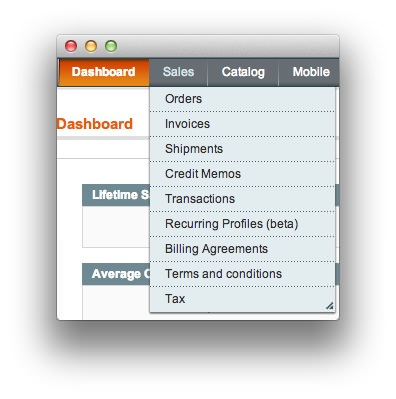
The Sales menu gives you quick access to orders, invoices, shipments, terms and conditions, and other information related to specific sales made on the site. For example, if you want to look at a specific invoice, you could navigate to Sales -> Invoices and find it there.
This is also the menu you will find Tax settings such as Tax Rules and Customer Tax Classes you can use to manage the tax collection through your site.
Pretty much everything and anything relating to sales made on your site can be found in this menu.
Catalog
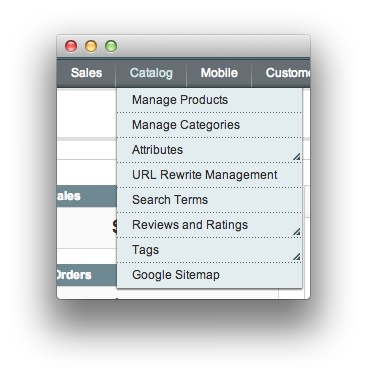
The Catalog menu is your primary stop for managing your product catalog. Your products, product categories, search terms, attributes (product features and other specifications), and more can be found using this menu.
This menu also includes access to Google Sitemap, indexing, and customer reviews. If it is related to your product catalog, it can be found here.
Mobile
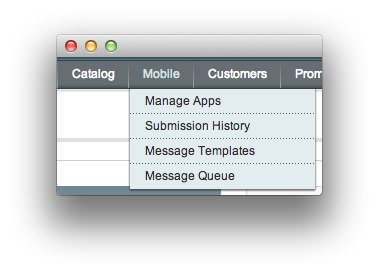
The Mobile menu allows you to access settings and options related to Magento Mobile. This includes apps, submission history, message templates, and the message queue.
Customers
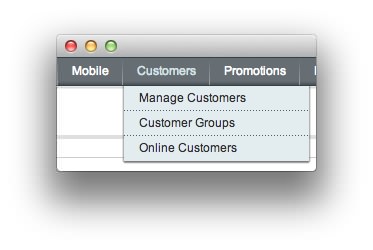
The Customers menu lets you manage information related to your customer base. This includes individual customer accounts, customer groups, and a list of all your customers currently online.
This list even includes customers that are not presently logged in. It is a great resource to use in the event you are considering taking down your site for maintenance but want to make sure you are not "turning the lights out" on a busy store. It can also be useful for troubleshooting and resolving customer service issues.
Promotions
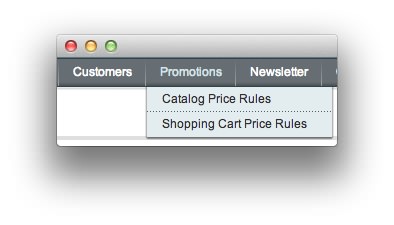
Promotional aspects of your online store are managed through pages accessible by the Promotions menu. Shopping cart rules and catalog price rules can be found here.
Newsletter
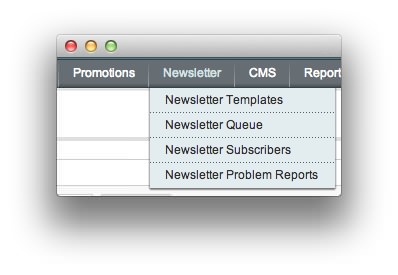
The Newsletter menu is your one-stop shop for all things related to your store's newsletter. If you want to get the word out about an upcoming promotion, sale, or maybe even any new items you have recently added to the catalog, this is where you can get that done.
You will also find a list of current subscribers you can use to manage this group, as well as a list of newsletter problem reports.
CMS
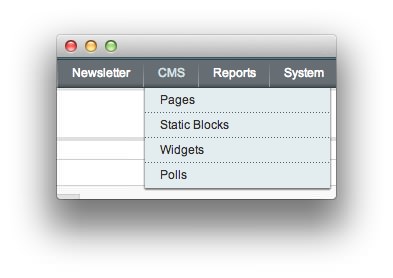
The CMS menu is where you can find administrative tools related to the content sections of your site. This is where you manage static blocks, content pages, and more.
Anything found on the site that is not directly related to your products, customers, or sales is typically managed here.
Reports
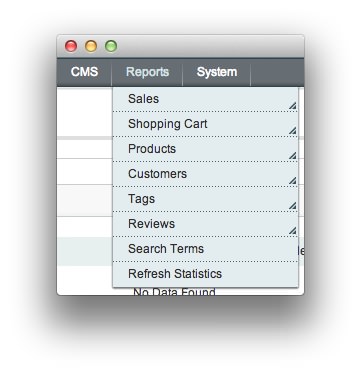
Data is your best friend in the world of e-commerce. The Reports menu gives you quick access to a vast array of reports you can use to evaluate virtually every aspect of your store's performance. If you want a more detailed report of anything touched on in the Dashboard, this is where you would find it.
System
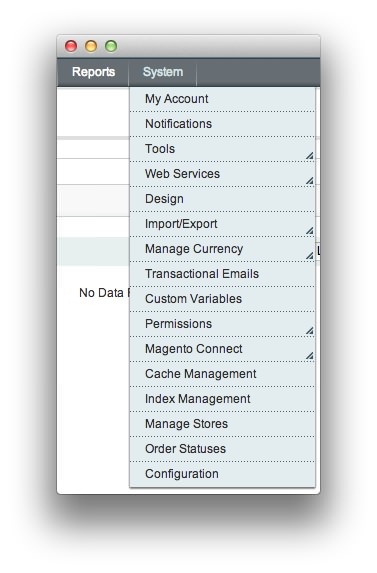
The System menu is basically the backend of the backend of your site. It is where you would go to manage options related to the actual function of your online store. Configuration utilities, administrative accounts, data import/export, currency, translations, permissions, and store view management is all controlled from pages found on this menu.